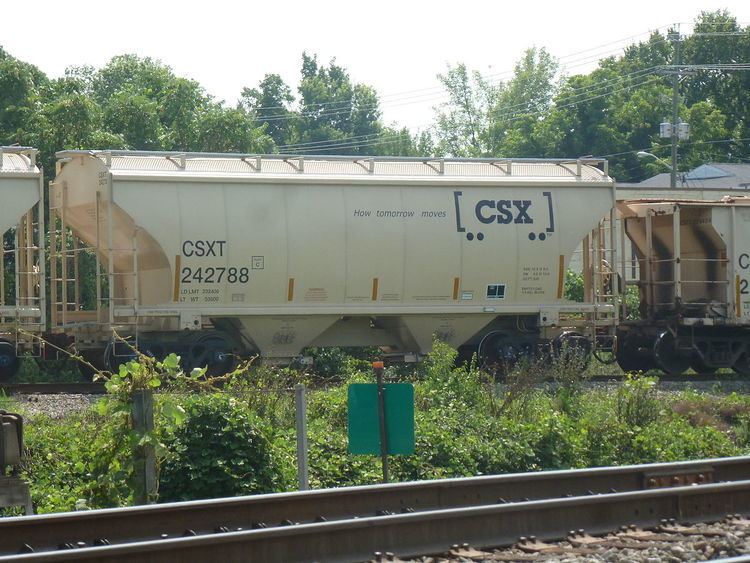 | ||
A covered hopper is a railroad freight car designed for carrying dry bulk loads, varying from grain to products such as sand and clay. The cover protects the loads from the weather - dry cement would be very hard to unload if mixed with water in transit, while grain would be likely to rot if exposed to rain. However, they are unsuitable for perishables such as fruit or meat - these are transported in refrigerator cars, where they can be kept at low temperatures, as well. Similar to an open hopper car, covered hoppers tend to contain two to four separated bays. Each of these can be loaded and emptied individually, with access at the top to load the materials and visible chutes at the bottom for unloading.
Covered hoppers in North American service have been built by most of the freight car manufacturers of the 20th century. Originally, boxcars were used for the transport of bulk materials, but these had many disadvantages. Not having been specifically designed for this, it was very hard to use any form of bulk material handling to load or unload them. Also, a large amount of product was liable to be lost, either during loading or unloading, or in transit - since the cars had to be boarded up, rather than using the doors, to enclose the products.
Hoppers with bays are used for different purposes; two-bay hoppers are used for the most dense loads (such as sand), while four-bay hoppers are more suited to lighter loads. This is due to axle load limits—for example, dry cement is very heavy in bulk quantities, and a four-bay hopper of sand would be very likely to exceed these limits, while also having problems with increased strain upon the central span. Therefore, by trading off cubic capacity, two-bay hoppers are able to transport these heavy loads. As technology has advanced, some of the heavier loads formerly assigned to two-bay hoppers have been assigned to larger, more efficient three-bay hoppers.
Large unit trains of various grain crops are a common sight in North America, reaching up to 125 cars long. These predominantly haul grain from the large farming areas of the Great Plains to various markets, but a number of unit trains originate from other major farming areas, such as Illinois and Indiana. These trains may originate from a single grain elevator, or may be marshaled in a yard from various locals (short trains which serve nearby industries). The destinations tend to be large flour mills or ports (for export), or they may be split up and delivered to multiple locations. The empty cars may return as a whole train, or may be sent back in smaller quantities on manifest trains (trains which carry just about any type of freight). These trains are used primarily for hauling products such as corn, wheat and barley.
